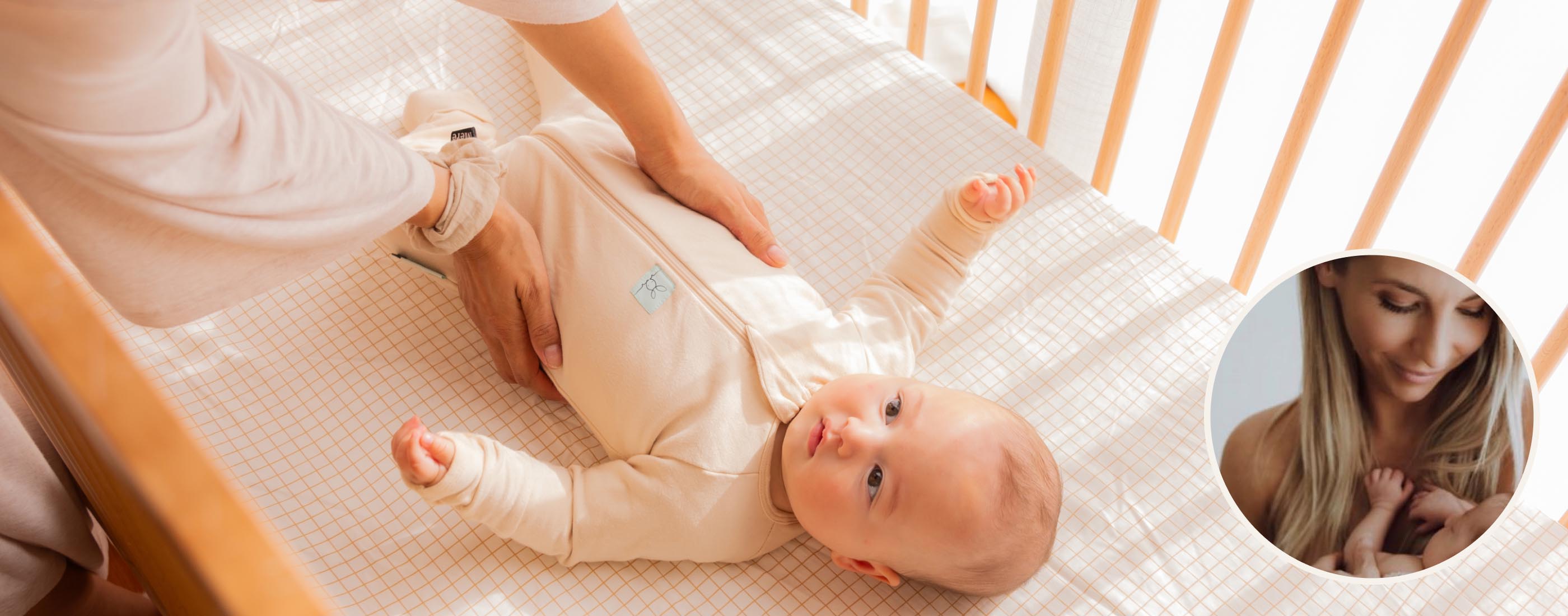
As your baby develops, their sleep needs evolve and nap transitions are a big part of that journey. Shifting from four naps to three, then two to one, one - none is completely normal but can feel overwhelming if it starts to impact nap length or night sleep.
The good news? You can support your little one through these transitions with minimal disruption. This guide will help you spot when it’s time to adjust naps and how to do it without causing over-tiredness, bedtime battles, or unnecessary night waking. Here is a guide to help you along the way. Remember this is just a guide so don’t feel pressure to make changes to things that are working for you.
Don’t Rush It
Just because your baby resists a nap doesn’t mean they’re ready to drop it. Trial extending awake times before removing a nap altogether. If needed, let the last nap happen in the car, pram, or carrier (safely) to preserve the nap a little longer. Rushing nap transitions can lead to overtired little ones, which often results in:
- Difficult settles
- Short or broken naps
- More frequent night waking
Be patient — hold onto those naps a little longer if sleep is still working well overall. However, avoid pushing bedtime past 7:45pm regularly. If things are getting tight, you might:
- Wake your little one slightly earlier in the morning
- Cap nap one if it’s going longer than 1.5 hours
Short Last Naps Are Okay
If the timing of the last nap is getting tricky, a short 15–20 minute nap can still work wonders. This “bridge nap” helps your little one make it to bedtime without a full nap or becoming overtired.
When dropping to one nap, a very short early first nap then focusing on midday nap works well If your little one is waking too early. Typically though my advice is to focus on nap one becoming the one nap a day but this short car nap in the morning to help you little one make it to lunch nap can work well when moving to one nap a day if your babe is struggling just on the one nap and won’t take a nap anymore.
If you have always capped nap one and worked with nap 2 being longer and it’s working well then of course no need to change it unless it’s not working well.
Adjust Awake Times Gradually
As naps drop, stretch awake time gently between the remaining naps to avoid our baby ending the day too early. Remember: when your baby is truly ready (and the timing is age-appropriate),the transition may take a few days but it won’t be nearly as tricky as when they’re not ready. Suddenly pushing bedtime too early after a nap drop can also backfire. Keep that in mind and find a balance between awake time and a sustainable bedtime.
Take the Guesswork Out of Nap Timing
That’s exactly why we created the Bambii App, to take the stress and guesswork out of sleep and solids.
With Bambii, you can:
- Track your baby’s sleep and wake windows in real time
- Receive nap and bedtime predictions based on your baby
- Use countdown timers to manage awake windows
- See clear sleep graphs and daily nap patterns and how to improve sleep.
- Sleep and solids tracking, meal planning, keeping track of likes, dislikes, allergens, menus based on what you have and more — all in one place
It’s your personalised sleep and solids assistant, designed by people who actually get it. Learn more about Bambii.
Is sleep pressure the issue?
If your little one is losing sleep pressure prior to their naps and night sleep this is when we will see issues with nap or bedtime refusal which many can mistake for them not needing a nap or needing more awake time. So what that means is that in the lead up to bed are they having opportunities of down time like dozing on feeds, rest in the car/pram etc. that they then get a second wind from. So keeping your little ones awake on feeds, engaged in the car or let them nap if that works, but either wide awake until sleep so that then they aren’t resting and re-booting. Building sleep pressure, not losing it.
How is sleep going overall?
Little ones who have poor sleep habits or struggle with sleep in general tend to drop naps too quickly. Working on sleep as a whole and giving your babes the skill of healthy sleep habits goes a long way when it comes to nap transitions.
| Age | Latest recommended nap wake time |
| 3 months | 6:00pm |
| 4-6 months | 5:30pm |
| 6-8 months | 5:00–5:30pm |
| 9–12 months | 4:15–4:45pm |
| 12-15 months | 3:45–4:15pm |
| 15 months + (1 nap) | Varies, some 18 month olds can sleep until 3:30PM and still go down at 7:30 PM. Others may need more awake time before bed. Trial and error is key. |
Final Thoughts
Nap transitions don’t need to be stressful. With the right timing, gentle adjustments, and support, you can keep your baby’s naps (and nights) on track without tears or confusion. You’ve got this and when you need a little backup, we’re here.
Our Bambii app is the perfect way to take the guess work out of your little ones sleep. Try it for free today. Download the Nap Transition Guide here.
Always follow Safe sleep practice — The Gentle Sleep Specialist.
About the author
Tara Mitchell is a former paediatric nurse of 15 years and is now a leading Sleep Consultant, helping families through the challenges of sleep. Struggling with her own personal experience with a sleepless child, Tara began the Gentle Sleep Specialist to help other parents on their sleep journey.
